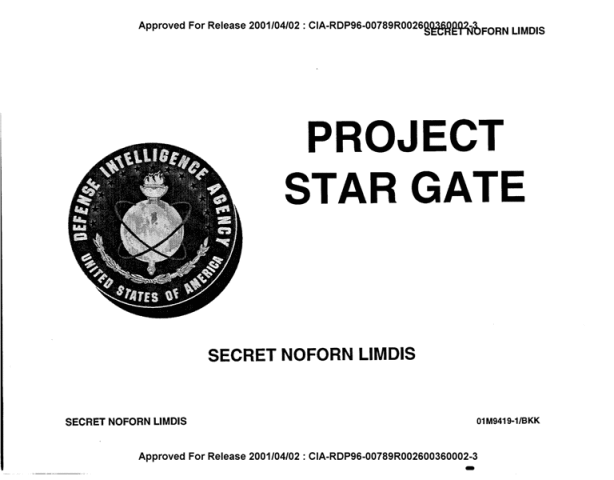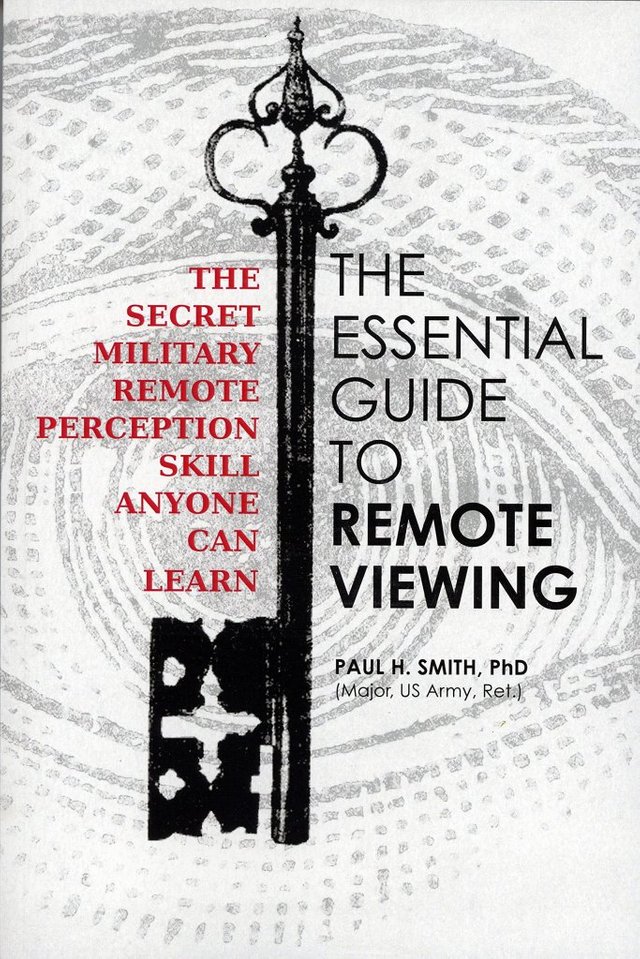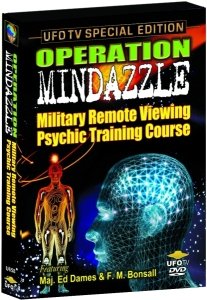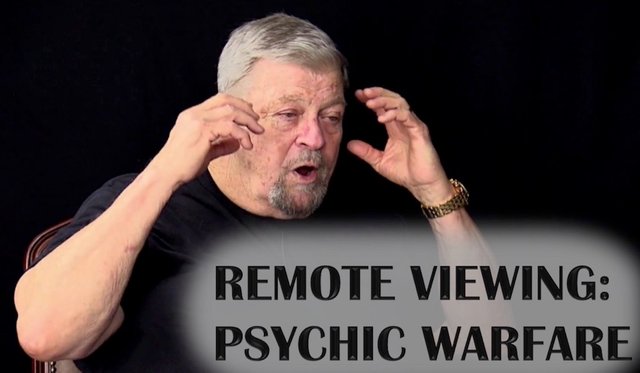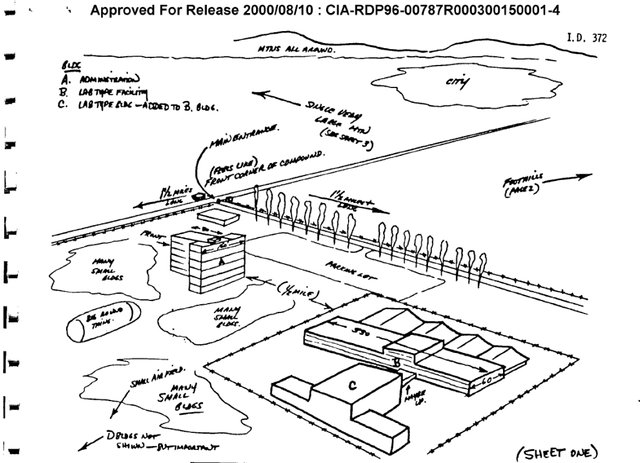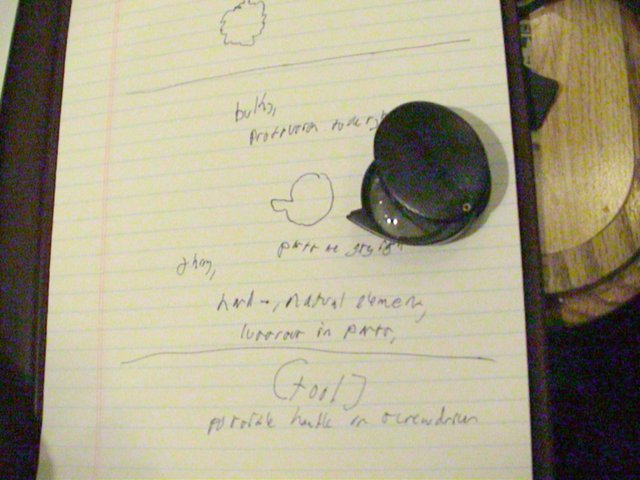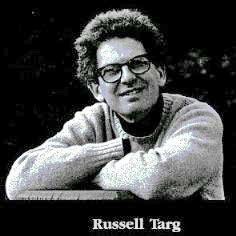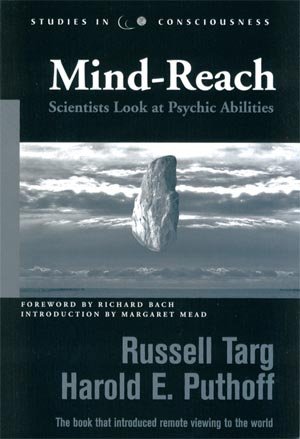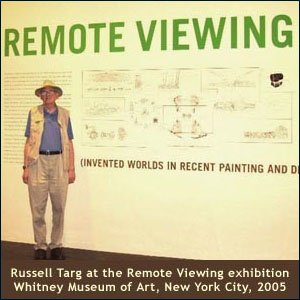Eu era um espião psíquico da CIA e encontrei Deus - uma história verdadeira
neilstrauss (68) na vida • o ano passado
Eu poderia me matar com a mente dele ...
Por vinte e quatro anos, os EUA o governo tinha um programa de espionagem que envolvia médiuns.
E não apenas médiuns comuns, mas frequentemente veteranos militares treinados pelo governo para se tornarem médiuns.
Fascinado por isso, decidi apresentar meus editores neste fascinante capítulo da história americana:
Visualização remota.
O artigo resultante, uma das peças em que mais trabalhei, foi morto e nunca publicado.
Por quê?
"Parece que você acredita nisso", disse meu editor.
"Tudo o que faço é relatar o que realmente aconteceu", respondi.
Um dos meus poucos registros na carreira é que a peça nunca foi publicada. Agora, graças a Steemit, chegou a hora.
Sei bem-vindo a postar o número dois na minha série "mortos e cortados".
Aproveite, deixe-me saber seus pensamentos e deixe-me saber se você gosta de um segundo artigo explicando como você pode tentar "visão remota" a si mesmo.
Bem-vindo ao ...
ACAMPAMENTO PSÍQUICO DE BOOT
Por Neil Strauss
"Durante dez anos, tive a oportunidade de me sentar em um quarto escuro com os olhos fechados e trabalhar para a CIA", disse Russell Targ sobre o Texas Station Casino. "Eu era um espião psíquico da CIA e encontrei Deus."
O Sr. Targ é, ao que tudo indica, um estereótipo de gênio dos nerds, com as calças presas ao umbigo, cachos grisalhos, óculos grossos de armação preta e uma voz alta e comprimida. Na década de 1950, ele fez sua reputação ajudando a desenvolver o laser. Mas em 1972, sua vida deu uma reviravolta no surreal quando ele e outro físico do Instituto de Pesquisa de Stanford, Hal Puthoff, se viram com um contrato da CIA. O Sr. Guerra e a Inteligência do Exército, o Sr. Targ e o Dr. Puthoff estavam na vanguarda dos capítulos mais estranhos da Guerra Fria: a espionagem psíquica. Equipes de estagiários foram treinados e encarregados de Stanford em um tipo de PES conhecido como visão remota, no qual, com caneta, papel e cérebro, eles se sintonizavam em eventos que ocorriam em locais e horários fora da percepção sensorial comum.
Por um quarto da história americana, eles realizaram tarefas secretas como mentalmente penetrantes. Jimmy Carter disse que foi quando ele estava seguindo sua eleição presidencial.
Enquanto discutia os congressistas e chefes de equipe que testemunharam e até realizaram feitos incríveis de visão remota, Targ de repente se virou para mim e perguntou: "Você já fez algum tipo de coisa psíquica?"
Eu disse a ele que não tinha certeza.
"Eu posso tentar te mostrar algo psíquico", ele respondeu. Com isso, ele empurrou minha salada de lado e colocou um bloco de notas na minha frente. "Eu tenho um objeto no meu bolso", ele continuou. "É um tipo comum de coisa que você encontraria no seu bolso. E o que eu estou convidando você a tentar descrever as formas que vêm à mente. Mas não tente adivinhar meu objetivo ".
Eu hesitei e tentei mudar de assunto, mas sem sucesso. "Com este objeto, o que você desenharia?"
Desenhei um círculo irregular e comecei a descrever uma imagem que sugeria: "É brilhante em algumas partes".
"O que mais vem ver?", Perguntou ele. "Há algo mais interessante que você possa me contar sobre isso?"
O livre-associado, dizendo-lhe tudo o que ele veio à mente. “As peças são cinza ou pretas. É brilhante. E talvez seja difícil do lado de fora ".
"Você pode escrever tudo isso", continuou ele. "Agora, por que você não desenha mais? Deixe vir até você. Você pode olhar para o seu futuro imediato, porque estou prestes a colocar isso na sua frente .. "
Eu coloco a caneta no papel e solto. Traçou um círculo, mas no canto inferior direito, por algum motivo, desenhei uma pequena protuberância em forma de bota. Eu olhei para ele e me desculpei, pronto para ele tirar uma carteira ou um lápis do bolso.
"Agora, me diga, sem nomear o objeto, qual é a propriedade dominante?", Perguntou ele.
"Bem, eu sinto que há algo saindo, como se projetar para um lado. E eu ainda sinto que é lustroso em partes ".
"Bem", ele disse, "está tudo bem correto. Você gostaria de ver o objeto? "
"Espere. Há mais uma coisa que quero anotar. Eu sei que não devo nomeá-lo, mas a protuberância parece uma alça ou algo que você segura, então talvez seja uma ferramenta. Eu não sei. Talvez eu esteja indo longe demais. "
"Você pode escrever isso se quiser", disse Targ enquanto tirava um objeto do bolso, colocando-o ao lado do meu desenho. Combinava perfeitamente - em tamanho, forma e descrição. Era uma lente de aumento em uma caixa redonda preta de superfície áspera com uma pequena alça saliente que podia ser usada para ente de aumento brilhante para fora.
Meu desenho real ao lado do objeto oculto de Targ.
Meu queixo caiu aberto, assim como os dos outros dois na mesa. Talvez fosse habilidade psíquica, talvez fosse acaso, talvez fosse magia de palco. De qualquer forma, Targ parecia perplexo. "Eu tenho um histórico de 30 anos em física", disse ele. "Eu sei que não estaria fazendo algo que não funcionasse de verdade."
Eu ri nervosamente. "O segredo", continuou ele, "é que não há realmente nenhum segredo. É uma habilidade que todos nós temos. "
Algo estranho está acontecendo em todo o país: desde que o governo desclassificou partes de seu programa de visão remota há alguns anos, os médiuns que ele treinou (muitos deles com experiência anterior em paranormalidade) ser psíquico.
A visão remota, dizem eles, não é um conhecimento exótico que só pode ser alcançado por alguns adeptos especiais e aberrações genéticas.
Qualquer um pode fazer isso. Eles só precisam saber como. Muitos comparam a visão remota ao ato de tocar guitarra: com o ensino adequado, ser humano com as mãos pode aprender a tocar algumas músicas. Mas apenas alguém nascido com um talento natural e aptidão para o instrumento pode se tornar um músico mestre como Paco de Lucia ou Jimi Hendrix.
Eu tenho ensinado suas habilidades duramente conquistadas por vários milhares de dólares. E essas classes não estão atraindo malucos, recém-chegados, adeptos da franja e porcas da conspiração. Eles estão atraindo CEOs, corretores, engenheiros e outros que não parecem ter um osso em seus corpos.
"Eu não gosto muito do paranormal", disse Victoria Bazeley, uma executiva de 42 anos da Disney Interactive, na Califórnia, que fez um curso de visão remota com o sargento Lyn Buchanan. “A razão pela qual me envolvi foi porque era científico e tinha formação militar. O fato de estar muito cortado e seco poderia ser medido. Não parecia muito fácil, como um truque de salão. "
A energia é a nova era dos anos 70 de expansão da consciência, então a informação é a meta-religião de hoje. Não há visão de mundo, nenhum sistema de crenças místicas e nenhuma magia envolvida na visão remota. Seus praticantes vão do devoto ao ateu. A teoria da internet está conectada à internet: todos os dados referentes a espaço e tempo estão conectados. Analisar os dados, analisar seus dados e analisar esses dados.
Entre as fileiras de telespectadores civis incluem-se o autor Michael Crichton, que ajudou com uma caça ao tesouro subaquática psíquica, e Billy Dee Williams, o antigo actor de Guerra nas Estrelas, que agora escreve romances de mistério para visão remota. Em um desenvolvimento mais incomum, a esposa de um ator de Hollywood deixou seu marido para seu professor de visão remota. Além disso, os telespectadores foram contratados para tudo, desde espionagem corporativa até buscas de crianças desaparecidas.
"Recebemos muita atenção da comunidade psíquica porque somos destros sobre o monopólio deles", disse Smith. "As pessoas poderiam abraçar a visão remota como se abraçassem suas TVs".
Embora esse dia ainda possa ser um sonho distante, a visão remota pelo menos tem se expandido dos círculos normais. "Quando a informação apareceu pela primeira vez", disse o Sr. Buchanan, um gentil texano de barba grisalha que parece compartilhar com você. "Recebemos de 8 a 20 candidatos por dia para as aulas." Eu recusei 95 por cento deles - malucos flamejantes, muito ruins. Agora eu digo que 95% das pessoas que nos chamam são pessoas de nível hierárquico, muitas das quais querem usá-lo em seus negócios. Eles sabem que isso não é mágica ou loucura. O que ensinamos é a coisa real. Não é um brinquedo. Se alguém tem problemas mentais, você não ensina essas coisas. "
Talvez a melhor coisa sobre a visão remota, acredite ou não, é que ela tem uma mensagem. Para se sentar em uma sala e de alguma forma adivinhar um objeto dentro de um bolso, para desenhar uma imagem em um envelope, para ver uma terra do outro lado nós vivemos em um universo não-local, no qual tudo está de alguma forma conectado. E daí vem alguns pensamentos muito profundos sobre a humanidade, o universo e a responsabilidade individual. Em tempo de jogos de vídeo sangrentos e música misantrópica, aqui está algo mais legal que Doom e Eminem - habilidade psíquica real para você e para mim - mas vem com valores morais e familiares embutidos.
"Uma vez que você descobre que você pode fazer isso, você vai" Whoah! "Agora, o que eu faço?", Disse Mel Riley, um ex-observador bem treinado e bem treinado do Exército, lembrando seu treinamento inicial. "Isso muda toda a sua visão do universo. Eu não posso dizer muito mais do que isso ".
O Sr. Targ explica a mudança que é a descoberta de que "você não é um corpo físico"
Com o codinome em vários pontos Desejamos Gôndola, Quadro de Grill, Lane Central, Sun Streak, Project Scanate e Star Gate, o programa de visualização remota começou com algas: Trabalhando com lasers e eletrônica quântica na Universidade de Stanford a teoria da física poderia lidar com conceitos como a consciência. Ele escreveu uma proposta de experimentos com algas para determinar isso, o que de alguma forma chamou a atenção de um extravagante psiquiatra de Nova York chamado Ingo Swann, que ligou para o Dr. Puthoff e disse que trabalhar com psíquicos em vez de algas. área entre física e consciência.
"De brincadeira", disse o seco e discreto Dr. Puthoff, ligou para Swann. O físico ficou surpreso ao descobrir que Swann conseguiu desenhar psiquicamente uma imagem de um magnetômetro blindado. Ele fez isso, os níveis do magnetômetro variavam ligeiramente. O Dr. Puthoff escreveu um relatório e queria saber que dois agentes da CIA estavam em seu escritório. mas, agora que a CIA havia aprendido sobre experiências russas de PES, também havia uma lacuna psíquica.
O aspecto mais paranormal do programa, segundo Targ, que será contratado pelo Dr. Puthoff, que sobreviveu por 24 anos em um mundo .
De acordo com testemunhas oculares e documentos desclassificados da CIA, suas sessões com Swann e outro psíquico chamado Pat Price foram extremamente precisas: secretárias digitando as transcrições de suas sessões tinham medo de que fossem remotas. Sr. Swann e Mr. Price, que acabaram deixando o laboratório para trabalhar diretamente para a CIA (onde suas operações permanecem classificadas ).
O programa de observação remota recebeu sua própria filial da Costa Leste em 1977, quando um capitão do Exército, chamado Skip Atwater, encontrou um livro do Sr. Targ e do Dr. Puthoff, da Mind Reach, e conseguiu convencer seus superiores de que era remoto. visualizar ameaças e possibilidades de inteligência sérias.
Disse o Sr. Atwater, que publicou suas memórias no mês passado, "Capitão do Meu Navio, Mestre da Minha Alma". "Nós grampeamos telefones de pessoas, quebramos seus escritórios e colocamos agentes em seus funcionários,
Atwater distribuiu testes de personalidade em todo o exército até formar uma equipe de potenciais médiuns, que operava em Fort Meade, em Maryland. O veterano vietnamita chamado Joe McMoneagle .. Um militar de pescoço grosso, de voz profunda, desenhou diagramas detalhados de armas nucleares chinesas em Lop Nor, localizou insetos em embaixadas americanas e descobriu um estado massivo de armas nucleares. submarino de mísseis que os soviéticos estavam construindo. Quando se aposentou do Exército, o Sr. McMeagle recebeu o Prêmio da Legião Nacional do Mérito por ser um dos "planejadores e impulsionadores originais de um projeto único de inteligência que está revolucionando a comunidade de inteligência" e, assim, outra fonte. "
O Sr. McMeagle agora trabalha no Instituto Monroe com o Sr. Atwater, onde os campi são usados para levar ao estado consciência, e às vezes até experiências fora do corpo. Durante anos, os agentes do programa de observação remota foram estabelecidos como funcionários públicos do programa Gateway to Voyager do instituto e aprenderam como inserir melhor um estado meditativo na visão remota.
Pessoalmente, o Sr. McMoneagle tem uma tendência a expressar, da mesma forma que outros homens podem dizer "Eu bebi uma cerveja hoje", linhas como: "Eu posso fazer você desejar que você estivesse morto à distância".
Como o Sr. Targ, o Sr. Smith e outros, ele não acha que observadores de bolas de cristal e leitores de tarô sejam bons telespectadores. Em vez disso, as pessoas mais comuns o fazem: aqueles que são motivados, extrovertidos tendem a trabalhar sozinhos, são bem-sucedidos em seus trabalhos e têm uma tendência artística excelente. Ele acrescentou que as pessoas com experiência em meditação se destacam, bem como os antecedentes abusivos, uma vez que têm usado sua intuição por muito tempo. "Eles podem ler o rosto de alguém", disse ele. "Eles sabem o que está acontecendo por trás dos olhos. Eu tive que fazer isso desde que eu era pequena ".
Onde alguns vêem a visão remota como uma consciência futura em evolução, o Sr. Moneagle, que ainda realiza milhares de visualizações remotas por ano, o vê como um vestígio de um passado distante, uma antiga habilidade de sobrevivência da qual evoluímos. Ele estima que 0,5% da população - ou uma em cada duzentas pessoas - são telespectadores de classe mundial. "Eles podem saber, mas estão empregando isso", disse ele. "Eles estão correndo para os negócios por suas calças e fazendo muito
Olhando para o Sr. Smith, ele parece mais o tipo de cara que dá seminários de vendas do que os psíquicos: ele está ficando calvo com uma fina combinação de Rogaine e a clássica pança do telespectador. Um mórmon ativo e um republicano convicto que é lógico de culpa, Smith votou em Ralph Nader na última eleição porque sabia que George W. Bush levaria o Texas, ele imaginou que quanto mais votos Nader recebesse, mais provável ele seria para executar o seguinte termo e tirar mais votos democratas. Por outro lado, o Sr. Smith é um ávido fã de heavy metal e muitas vezes tenta limpar a mente.
Hoje, ele ensina a forma mais popular de visualização remota, visualização remota controlada, usando o método Ingo Swann. (O outro método principal, visão remota ampliada, envolve o sujeito que entra em um estado meditativo em transe e praticamente sai do corpo para acessar o alvo. )
No geral, o objetivo da metodologia do Sr. Swann é nos forçar a desacelerar e dar grandes saltos inferenciais à medida que sua conexão mental com o alvo se alarga lentamente, como olhos dilatados à luz. Um alvo não é revelado em um lampejo de insight: em vez disso, a informação vem em pequenos volumes de dados. Os espectadores devem ter aprendido como evitar que suas mentes analíticas interfiram no processo. Para aqueles que acreditam na dualidade do cérebro, a visão remota é um processo do lado direito do cérebro. Não importa o quão ridículo, e não para interpretar o que eles são. A chave para o sucesso, diz Smith, é "Identificar e confiar em suas experiências", o que não é uma lição de vida ruim para se aprender. O Dr. Puthoff compara o processo de visão remota à perfuração de vários buracos em uma porta até que, finalmente, a porta inteira desaba, revelando o que está dentro da sala.
Mais especificamente, o método Ingo Swann é um processo de seis etapas: primeiro o espectador, através de um rabisco automático, tenta perceber a gestalt básica do alvo e determinar se é terra, água ou algo feito pelo homem. Em seguida, o espectador tenta pegar dados sensoriais básicos - textura, forma, cor, cheiros e sons. No terceiro estágio, o espectador esboça e percebe informações dimensionais avançadas. No estágio quatro, dados mais complexos e conceituais sobre o alvo fluem e são classificados em colunas. No estágio cinco, o espectador se desconecta da linha de sinal e começa a analisar as informações nessas colunas, descobrindo o que as palavras implicam. E o estágio seis envolve modelagem tridimensional, não muito diferente de Richard Dreyfus construindo a Torre do Diabo com purê de batatas em "Contatos Imediatos do Terceiro Grau" (apenas a argila é preferida aos alimentos). Se alguém tentar ficar longe de tudo, será capaz de fazer o trabalho.
Em outras palavras, é muito trabalho. Depois de um dia de treinamento psíquico com o Sr. Smith, tudo o que aconteceu O treinamento em si foi muito militar, cheio de termos como "interrogatório" e "protocolo" e "alvo".
O Sr. Smith nos levou até a mercearia. Enquanto caminhávamos, o sr. Smith nos fazia imaginar como seria se estivéssemos observando remotamente o lugar: sentíamos as correntes de ar dos frigoríficos, cheiramos nectarinas não amadurecidas e rosquinhas recheadas, observávamos os reflexos das luzes do teto no chão, senti a textura de uma garrafa plástica de leite, escutei a silenciosa Muzak e, em geral, amedrontou a equipe, que ficava perguntando se precisávamos de ajuda, apenas para ser dispensada pelo Sr. Smith com as palavras "nós". re em uma viagem de campo ".
Armado com comida da loja, o Sr. Smith então fez um piquenique na colina próxima, com vista para um riacho. "No segundo estágio, você está piscando pela área, então penso no que você está vendo aqui", disse ele. "Se você conhecer a água, pense nas diferentes maneiras de descrevê-la." Pode ser correndo, correndo, correndo, batendo, quebrando, correndo, girando, pingando, caindo. "
Depois, voltamos para a sala de conferências do Wellesley Suites, onde nossas aulas formais aconteceram e, uma a uma, entramos na sala com o sr. O Sr. Smith puxou para a pasta de manila do adido que ele usou na Operação Tempestade no Deserto - ainda carrega as letras pretas “Cpt. Smith ”- e escondeu a pasta atrás de um suporte de música. Este era o meu alvo, e ele tinha atribuído um número aleatório de nove dígitos
Muitos telespectadores remotos, como o dr. Puthoff e o sr. Targ, ganharam um bom dinheiro no mercado de futuros de prata por meio da visão remota, afirmam eles. Como a visualização remota de números e letras reais é difícil, isso é feito através de um processo chamado Visualização Remota Associada. Ao procurar uma certa direção, alguém atribuirá um objeto aleatório para cada direção: um tênis representaria o estoque subindo; um vaso caindo. O espectador (ou melhor ainda, uma equipe de espectadores) é solicitado a prever o futuro desenhando o objeto que será mostrado às 17h. no dia ou semana seguinte. Se o espectador ou os espectadores desenharem um sapato ou vaso definido, o investidor procederá de acordo. O espectador é mostrado tênis, se você foi para baixo. E, se eles gerenciarem seu próprio futuro, eles ganharão muito dinheiro.
Buchanan diz que, embora os Estados Unidos pareçam a visão remota, outros países podem ter esses programas. Ele prevê que a visão remota acabará tendo sucesso em vazar para a vida cotidiana dos civis - graças a aspirações rápidas, pais tentando descobrir onde seus filhos estão às 2 da tarde, corporações espiando umas às outras e muito mais. "Então o garoto vai morrer", diz ele. "Será o garoto que sempre morre - aquele que está jogando com o ioiô quando saiu pela primeira vez, ou jogando masmorras e dragões, ou ouvindo o 'jazz' de Elvis Presley." os professores vão ensinar e vai ser uma caçada e a visão remota vai voltar para o armário. E então, quando voltar no armário, o governo vai começar a usá-lo novamente ".
O Sr. Buchanan acrescentou que provavelmente acontecerá nos próximos 20 a 30 anos. E o que exatamente o torna tão confiante de que isso vai acontecer? Bem, ele respondeu, ele o viu remotamente.
I Was a Psychic Spy for the CIA, and I Found God – A True Story
